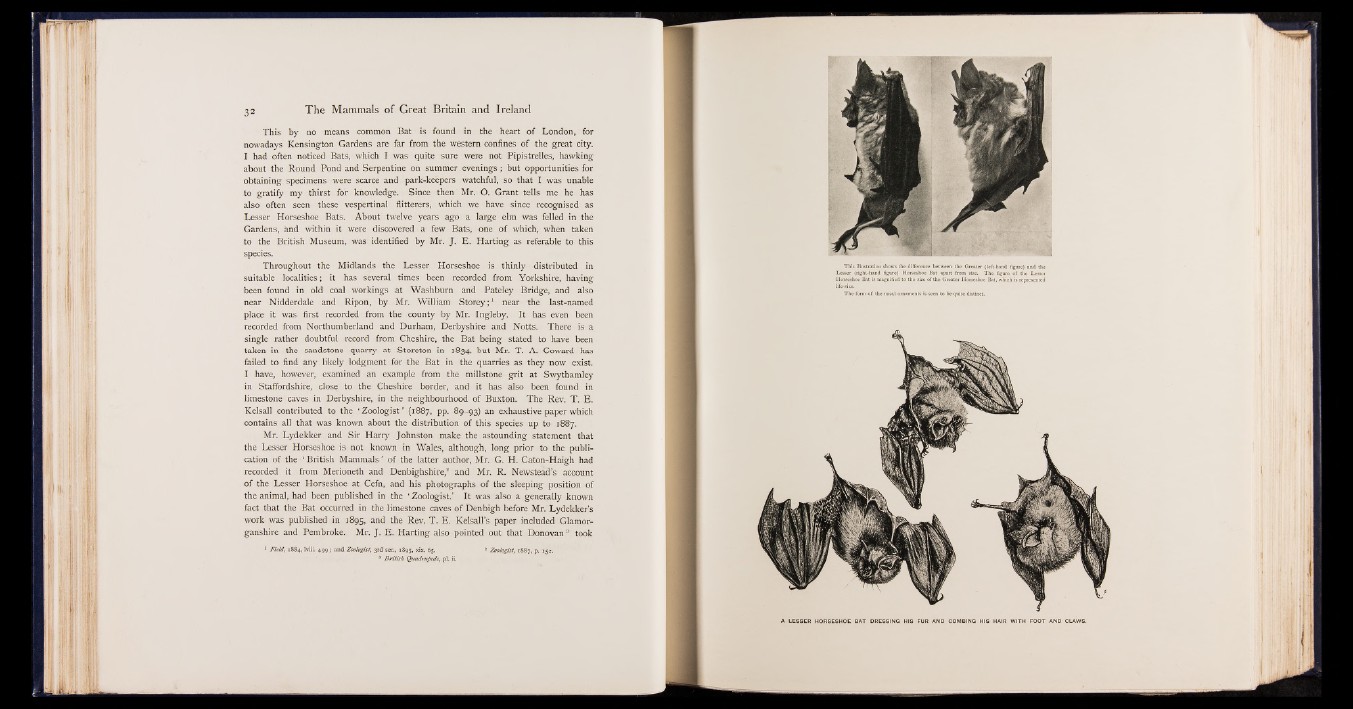
This by no means common Bat is found in the heart of London, for
nowadays Kensington Gardens are far from the western confines of the great city.
I had often noticed Bats, which I was quite sure were not Pipistrelles, hawking
about the Round Pond and Serpentine on summer evenings; but opportunities for
obtaining specimens were scarce and park-keepers watchful, so that I was unable
to gratify my thirst for knowledge. Since then Mr. O. Grant tells me he has
also often seen these vespertinal flitterers, which we have since recognised as
Lesser Horseshoe Bats. About twelve years ago a large elm was felled in the
Gardens, and within it were discovered a few Bats, one of which, when taken
to the British Museum, was identified by Mr. J. E. Harting as referable to this
species.
Throughout the Midlands the Lesser Horseshoe is thinly distributed in
suitable localities; it has several times been recorded from Yorkshire, having
been found in old coal workings at Washburn and Pateley Bridge, and also
near Nidderdale and Ripon, by Mr. William Storey;1 near the last-named
place it was first recorded from the county by Mr. Ingleby. It has even been
recorded from Northumberland and Durham, Derbyshire and Notts. There is a
single rather doubtful record from Cheshire, the Bat being stated to have been
taken in the sandstone quarry at Storeton in 1834, but Mr. T. A. Coward has
failed to find any likely lodgment for the Bat in the quarries as they now exist.
I have, however, examined an example from the millstone grit at Swythamley
in Staffordshire, close, to the Cheshire border, and it has also been found in
limestone caves in Derbyshire, in the neighbourhood of Buxton. The Rev. T. E.
Kelsall contributed to the ‘ Zoologist' (1887, pp. 89-93) an exhaustive paper which
contains all that was known about the distribution of this species up to 1887.
Mr. Lydekker and Sir Harry Johnston make the astounding statement that
the Lesser Horseshoe is not known in Wales, although, long prior to the publication
of the ‘ British Mammals ’ of the latter author, Mr. G. H. Caton-Haigh had
recorded it from Merioneth and Denbighshire,2 and Mr. R. Newstead’s account
of the Lesser Horseshoe at Cefn, and his photographs of the sleeping position of
the animal, had been published in the ‘ Zoologist.’ It was also a generally known
fact that the Bat occurred in the limestone caves of Denbigh before Mr. Lydekker’s
work was published in 1895, and the Rev. T. E. Kelsall’s paper included Glamorganshire
and Pembroke. Mr. J. E. Harting also pointed out that Donovan8 took
1 Field, 1884, lviii. 499; and Zoologist, 3rd ser., 1895, six. 65. 2 Zoologist, 1887, p.152.
8 British Quadrupeds, pi. ii.